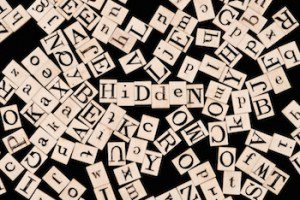
A recent change in the classification of mental disorders has led to some confusion about the term autism and what is represents.
Prior to 2014, autism was considered a distinct mental condition, separate from several other similar conditions, like Asperger’s Syndrome.
That is no longer the case. Autism is now viewed as a sub-type of a larger category known as Autism Spectrum Disorders (ASD). Aspergers, Pervasive Developmental Disorder and Childhood Disintegrative Disorder, all conditions that were previously thought to be separate and distinct are also incorporated into ASD.
The significance of this change is that we no longer speak of someone as having autism or Aspergers. Rather the person is said to have an Autism Spectrum Disorder. In time, as this change becomes incorporated into general usage, autism will no longer be a part of the public vocabulary.
What Does Autism Spectrum Disorder Look Like?
People with ASD share a number of difficulties. Most important of these is a relative lack of interest in other people. Normal social conversational skills and social skills are delayed or missing. Making friends and maintaining social relationships is difficult. The person avoids attaching to others.
A person with ASD may have problems modulating the volume of his or her voice and may need to be continually reminded to speak more softly. Individuals with ASD are not generally isolated from the rest of the world as a result of their own withdrawal, rather they are isolated because they have poor social skills or because their interests are narrow.
The focus of a person with ASD is on a consistent routine with repetitive, sometimes odd or peculiar, behaviors. Adjusting to routines is hard, and the person often insists on having a unique version of a routine. Rituals or unusual preoccupations are common.
Additionally, the person typically has a fascination with certain objects. In childhood this may involve attaching to a particular toy with a determination and focus that is more extreme than usual. A similar focused interest on such things as stamps, train schedules, cars and obscure DVDs is characteristic of adults with ASD.
Facts About ASD
Approximately 1 out of every 88 children in the United States have ASD. It is also much more common in boys than in girls; 1 out of every 54 boys and 1 out of every 252 girls is diagnosed with ASD in the U.S. Approximately 2 million individuals in the U.S. have ASD.
The most obvious signs and symptoms of ASD emerge between 2-3 years of age. There is no single cause for ASD, although genetic factors play a large role. Current opinion is that some people are genetically susceptible to ASD but they only develop ASD when non-genetic, environmental factors come into play.
There is no cure for ASD. The primary goals of ASD treatments are to lessen deficits and lessen family and social stresses. There are a number of ways to do these things, including psychotherapy, social skills therapy, speech and language therapy and the use of medication. Also, educating parents, caregivers and siblings and helping them to cope with the unique challenges of someone with ASD are ways to help all involved in ASD.




